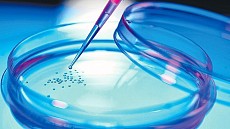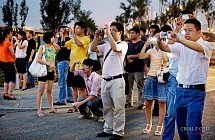Beijing plans to beat smog by 2030
Almaty. January 6. Silkroadnews - Beijing reached its annual target for reducing hazardous pollutants in 2015 and is draftinga long-term plan to improve air quality to the clean level by around 2030, People's Daily Online reports.
In 2015, the capital saw 186 days with air quality that was better than the national safetystandard, 14 days more than the number in 2014, said the annual report on air pollutioncontrol from the Beijing Environmental Protection Bureau on Monday.
Additionally, from the detailed data on hazardous pollutants, the annual average readingin Beijing of PM2.5-airborne particulate matter with a diameter less than 2.5 micronsthat can penetrate the lungs and harm health-fell to 80.6 micrograms per cubic meter in2015, the report said.
The annual reading was a reduction of 6.2 percent year-on-year, surpassing the annualgoal of a 5 percent reduction. However, the reading was still above the national safetystandard of 75 micrograms per cubic meter.
Despite the goal's achievement, some residents have called for a bigger improvement,especially since experiencing spells of severe smog in the capital since November.
"PM2.5 pollution is still the prominent problem in Beijing and requires strengthenedefforts," said Fang Li, deputy director of the bureau.
There was a clear reduction in the three other major airborne pollutants-sulfur dioxide,nitrogen dioxide and PM10. The annual average reading for sulfur dioxide, for example,was lowered to 13.5 micrograms per cubic meter in 2015, much better than the nationalsafety standard of 60, the report said.
However, the municipal government has issued two red alerts, the highest emergencyresponse, to control the worsening conditions. Thus, many people thought the targetwould be missed.
"I didn't feel the clear improvement in air quality in the winter, and many of my friendsand colleagues have coughed and experienced sore throats due to the bad air recently,"said Chen Yang, 29, who works in a printing house in Beijing.
Li Li, a 52-year-old civil servant in Beijing, said the average reading of PM2.5 might haveimproved, but she felt the smog came more frequently. "When might we feel the realimprovement, instead of the data?"
Zhang Dawei, head of the Beijing Environmental Monitoring Center, said the annualreadings combine data from good and smoggy days, and that overall the days of heavypollution have been reduced by one day.
He conceded that heavy pollution days in November and December worsened the airquality dramatically and dragged down the overall performance.
Before smog blanketed the capital at the end of the year, Beijing had managed to cut thePM2.5 daily average readings by 20 percent year-on-year, he said.
Soaring coal consumption and vehicle exhaust emissions have been major factors in therecent smog, the report said.
Beijing slashed coal consumption to 12 million metric tons in 2015 – 11 million metric tonsfewer than in 2012. Also, as part of the restrictions, over 300,000 households inDongcheng and Xicheng districts, the core region of Beijing, used electricity to provideheat to replace the use of coal-fired boilers.
Beijing is drafting a plan for longterm environmental protection that is expected to bereleased by the end of the year, he said. He added that by around 2030, Beijing is expectedto reach 35 micrograms per cubic meter, at or below which is considered the best airquality.
In addition to the long-term target, the central government has issued a near-term targetthat might not be easy to reach.
While Beijing has lowered the annual PM2.5 reading to 80.6, it's expected to reach 60 by2017, as stipulated by the State Council, China's Cabinet.
"It's never easy to cut the PM2.5 readings and improve air quality, but we will further therestrictions on emission of pollutants," said Fang, the deputy head of the EnvironmentalProtection Bureau.


